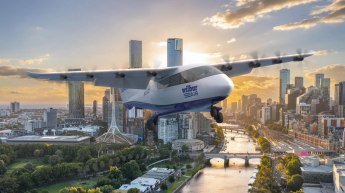
Four Air New Zealand services between Auckland and Wellington were cancelled on Wednesday after its A320s were affected by both bird and lightning strikes on the same day.
It came as two weather fronts made their way to the North Island, causing a tornado to take out powerlines, fences, and lift roofs.
“Both aircraft are being inspected by engineers before being returned to service. These [incidents] are not uncommon, and our pilots train for these scenarios,” Air New Zealand said.
While both bird and lightning strikes are not uncommon, to have two serious incidents on a single day is unusual.
In the US, the FAA estimate ‘wildlife strikes’ have increased from 1,800 in 1990 to 16,000 in 2018.
“Expanding wildlife populations, increases in number of aircraft movements, a trend toward faster and quieter aircraft, and outreach to the aviation community all have contributed to the observed increase in reported wildlife strikes,” the FAA said.
“As a result of the increase in wildlife strikes, there has been greater emphasis on wildlife strike hazard research and airfield wildlife management.”
It comes after Jetstar flights to Bali were cancelled for weeks earlier this year due to “multiple” lightning and bird strikes, as well as debris on the runway affecting another.
Air New Zealand, meanwhile, has also faced multiple issues with its 787-9 on its ‘non-stop’ service between Auckland and New York.
Critics have suggested the current 787-9’s range simply isn’t long enough to accommodate the 16 or 17-hour flight if unforeseen events cause it to have to slightly change its route.
The fourth-longest service in the world has run into repeated complications on its nonstop promise, with one flight asking 15 passengers to get off the aircraft to save weight. Another instead removed luggage and put it on another flight.
The distance issues come because the 787-9s have a traditional range of 14,010km, far shorter than the A350-1000s that Qantas will eventually use to fly Project Sunrise flights to New York and London, which can travel for near 18,000km.
In October, the business’ chief operational integrity officer, David Morgan, told Australian Aviation that working on ultra-long-haul flights is “challenging”.
“The plans we had in place were based on a level of operational surety — but we have come up against some challenges with weather outside our usual forecasting,” he said.
“Because extra fuel is needed when the weather doesn’t play in our favour, we’ve had to make a number of changes, including reducing payload, to operate the flight safely, and these changes will flow through for the next few months. A number of airlines have been disrupted by this same weather pattern and it is common practice to reduce customer numbers on flights when weather calls for it.”















